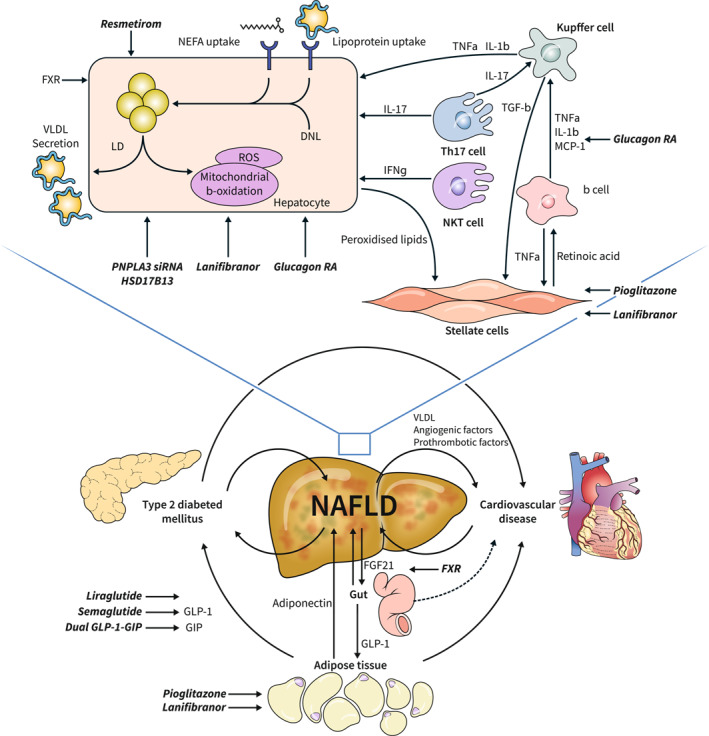FIGURE 4.

The complex pathophysiology of Metabolic Dysfunction Associated Steatohepatitis (MASH). MASH is driven by the complex interplay of metabolic, inflammatory and fibrogenic processes. Within the liver, hepatocytes (and its intracellular organelles, most notably mitochondria), play an important role, alongside the stellate cells and several resident and infiltrating immune cells of different populations. The liver is at the centre of an important crosstalk between the liver, the adipose tissue, the gut the pancreas and the cardiovascular system, 2 , 8 with MASH being an important driver of complex vicious circles involving many organs. Drugs/pathways that have been tested in MASH or that are under development, mentioned and/or referenced in the text are depicted anchoring point in the complex pathophysiology of MASH. DNL, de novo lipogenesis; FGF21, fibroblast growth factor 21; FXR, farnesoid receptor X; GIP, glucose‐dependent insulinotropic polypeptide; GLP‐1, glucagon‐like peptide 1; HSD17B13, Hydroxysteroid 17β dehydrogenase; IFNγ, interferon gamma; IL1‐β, interleukin 1 beta; IL‐6, interleukin 6; IL‐17, interleukin 17; LD, lipid droplets; MCP‐1, monocyte chemoattractant protein 1; NEFA, non‐esterified fatty acids; NKT cell, natural killer T cell; PNPLA3, patatin‐like phospholipase domain‐containing protein 3; RA, receptor agonist; ROS, reactive oxygen species; siRNA, small interfering RNA; Th17, T helper 17 cell; TGFβ, tumour growth factor beta; TNFα, tumour necrosis factor alpha; VLDL, very low density lipoproteins. Source: Figure adapted from 2 (courtesy J. Haas) and Ref 8 .
